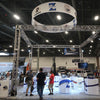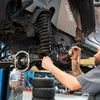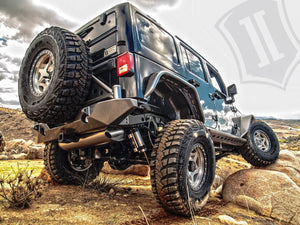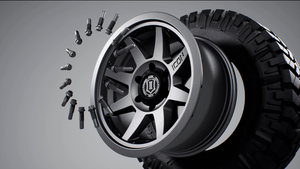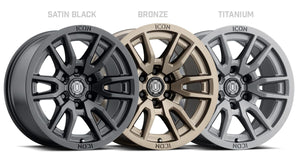
Tech Tidbit: All-Wheel-Drive Roll-Out Tire Test
Harmony, balance, and smoothness… are all attributes of a healthy all-wheel-drive system. While there are many component systems that have to work hand in hand, tires are often taken for granted and overlooked by enthusiasts and shop owners alike. A simple roll-out test will ensure your tires are in sync with the driveline.
Why A Roll-Out Tire Test?
Symptoms of an un-even roll out include, the vehicle pulling to one side, strange locker operation, worn spider gears, worn LSD clutches, and stress on the differential and transfer case. Over time the stress put on transfer case internals can lead to poor performance, and ultimately, failure.
Tire Size
Looking at an all-wheel-drive vehicle from a four-corner standpoint, with each corner represented by a traction tire, you want to achieve a balance of circumference at each corner.
When one corner is moving at a different speed, faster or slower, than the other corners due to a difference in circumference, the resulting imbalance creates stress that will be transferred to the weakest link, which is usually the internal components of the transfer case or the differential.
Many customers think replacing a worn tire is a way to fix this issue. Even if it’s the same exact size, tires from different manufacturers have different circumferences… heck even same-sized tires from the same manufacturer but in a different model can have different circumferences. This means problems are still possible. There is a reason why all-wheel drive vehicles, especially Subarus, mandate replacing all the tires at once… it keeps the Symmetrical All Wheel Drive system… symmetrical, happy, and in balance. Buying four tires at a time ensures you’re purchasing from the same production batch and that the tires are well matched.
Tire Pressure
Tire pressure can also have an impact on the likelihood of trouble. Mis-matched pressures between tires can lead to circumference differences which can result in differences in tire rotation speeds, thus opening the door to uneven drivetrain loads.
The Roll-Out Test
- Step 1:
- You will need two people, one to view and measure and one person to operate the vehicle. Mark each tire exactly in the 6 o’clock position with a paint stick or chalk.
- Step 2:
- Using the front driver’s side tire as the reference tire, have one person drive the vehicle as the other person monitors the driver’s side tire and counts out 10 revolutions. Let it slowly roll forward then stop and creep it forward until the front driver’s side tire mark is once again in the 6 o’clock position. You can mark the pavement at 6 o’clock to serve as a visual reference to better compare each tire.
- Step 3:
- Put the transmission in park/neutral. Then check the other three tires and see how the tire marks present. If any of the other marks are not at 6 o’clock, your tires are not revolving at the same speed and there may be undue load being transferred to your transfer case and/or differential. If a mark is off by more than an inch, you may have a bad tire or you’ll need to check your tire pressure… or both.
- Step 4:
- If you’ve checked tire pressure and a difference remains in your tires, see your local tire retailer for new tires. As mentioned above, it may be wise to replace all four tires simultaneously with the same/similar date code in order to ensure you’re getting tires from the same manufacturing batch.
A properly conducted roll-out test can be a quick and easy way to possibly identify the root cause of a customer’s ongoing issue. You come off as a superhero, the customer is happy, and he or she will be back to support your business in the future. A win-win for sure.
Share Article:
No comments yet. Be the first to add comment!
Leave a comment
Your email address will not be published. Required fields are marked with *
